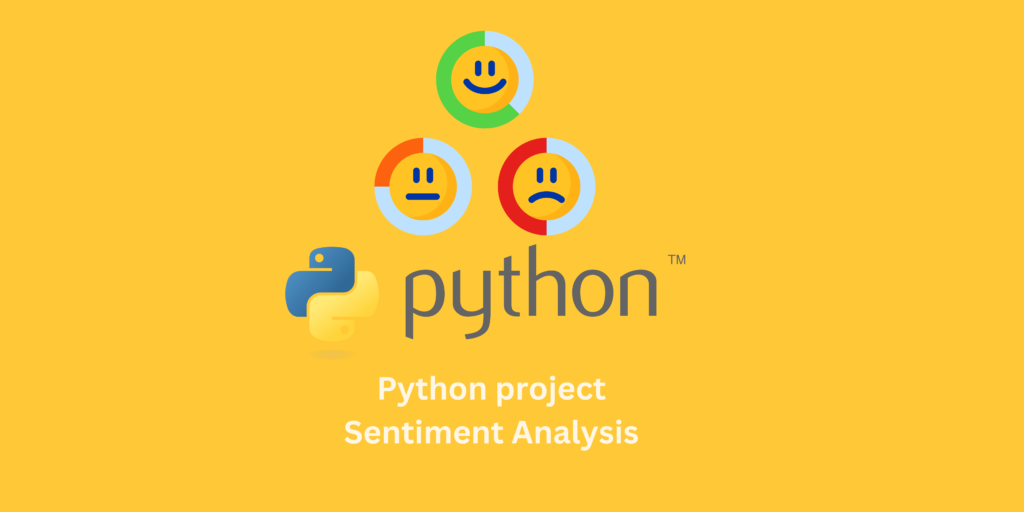
Table of Contents
What is Sentiment Analysis?
The practice of evaluating text data to ascertain the sentiment or emotion it represents is known as sentiment analysis. Using Python, we will create a sentiment analysis model in this project that can categorize text data as positive, negative, or neutral.
Let’s Start Coding
To create our sentiment analysis model, we’ll use the TextBlob and Natural Language Toolkit (NLTK) libraries.
We must first install the necessary libraries. Run the following commands after opening your terminal:
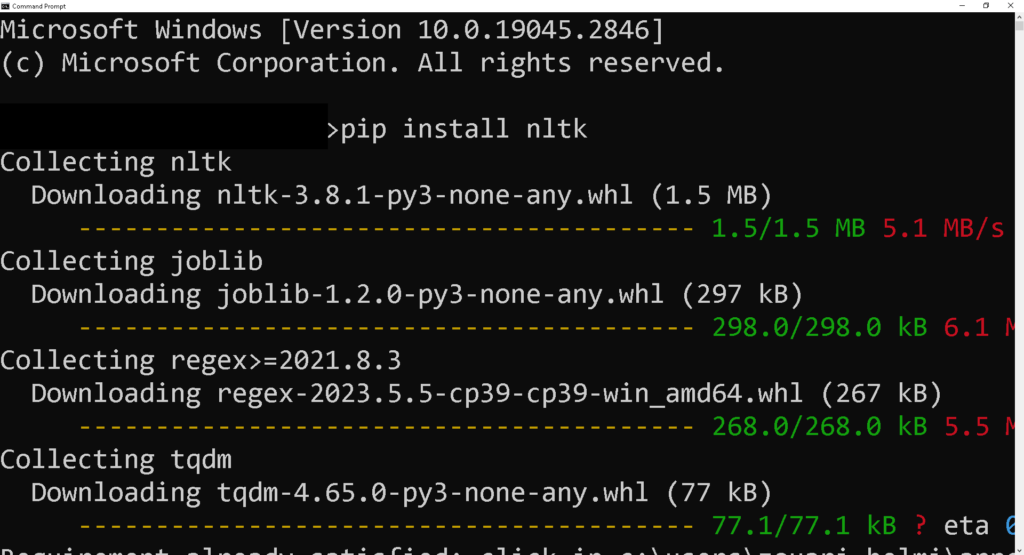

1- pip install nltk
2- pip install textblob
Following the installation of the libraries, we can move on to the next steps:
1. Import Libraries and Download Data
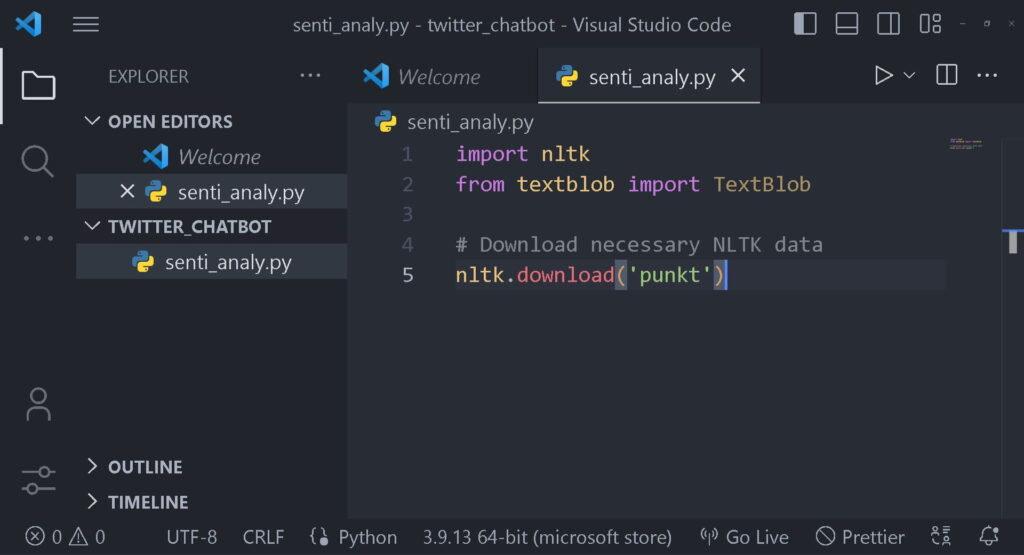
2. Load Data
The data we want to analyze will be loaded in this stage. Any text data, including tweets and movie reviews, is usable. We will use the NLTK corpus’s movie review data for this project. ( You can find the code at the end of the article )
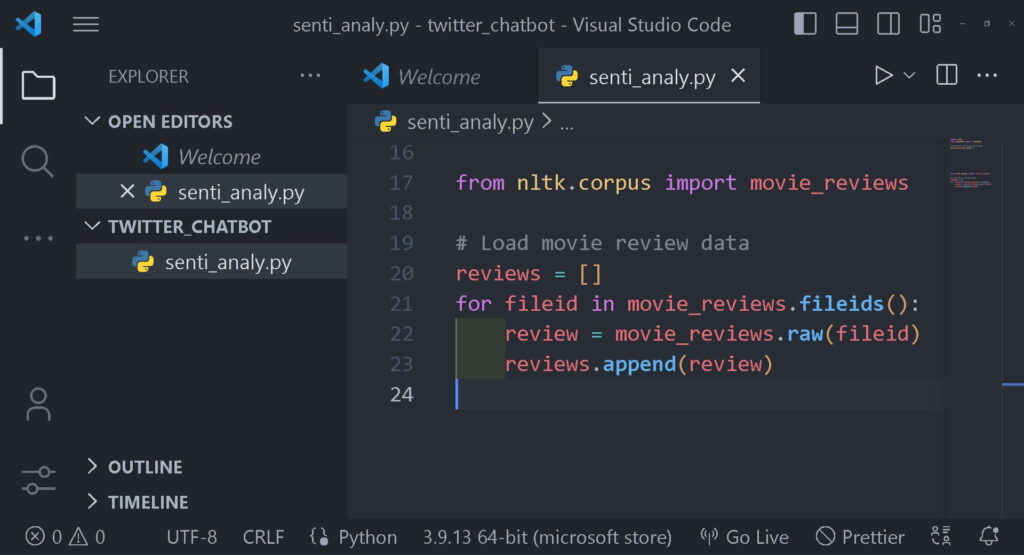
3. Preprocess Data
Data needs to be preprocessed before analysis can begin. Lemmatization, stop-word elimination, and tokenization of the data into sentences will all be done.

4. Analyze Data
The data has been preprocessed, and we can now use the TextBlob library to examine it. To ascertain the sentiment of each movie review, we will use TextBlob’s sentiment analysis tool.
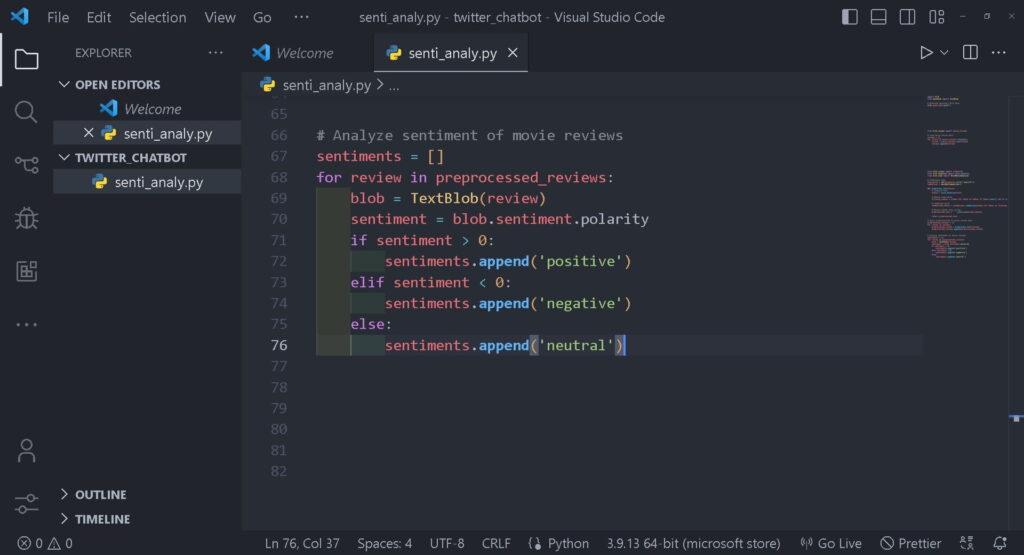
5. Visualize Data
Finally, we can use the Matplotlib library to visualize the outcomes of our sentiment analysis.
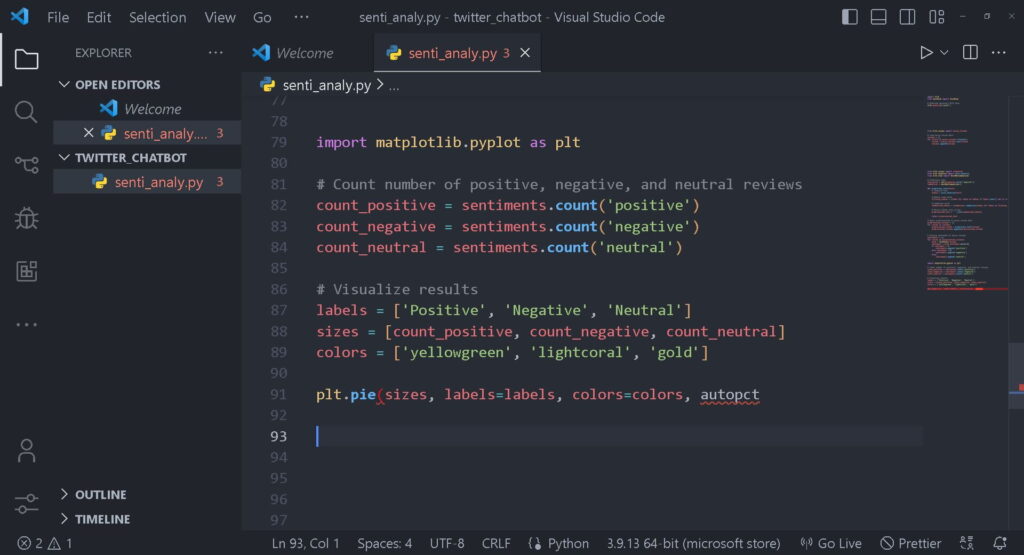
Download the code of this python project
What is sentiment analysis in Python?
Imagine you have a giant box of tweets, reviews, or even movie comments. Sentiment analysis in Python is like having a special machine that sifts through them and figures out the overall mood: happy, sad, angry, or just plain neutral. It’s like having a built-in emotional compass for text!
Python libraries like NLTK (Natural Language Toolkit) and TextBlob act as your sentiment analysis detectives. They use their knowledge of words and how they’re used to uncover the hidden emotions in text. Pretty neat, huh?
Can I use ChatGPT for sentiment analysis?
ChatGPT is a cool chatbot that can hold conversations, but it’s not specifically designed for sentiment analysis.
It’s more like a chatty friend you tell your woes to, while sentiment analysis tools are like data detectives analyzing the emotions behind those woes.
Does NLTK have sentiment analysis?
Absolutely! NLTK (Natural Language Toolkit) is a fantastic Python library that has tools for sentiment analysis. It’s like a Swiss Army knife for working with text data, and sentiment analysis is just one of its many cool features.
NLTK has things like VADER (Valence Aware Dictionary and sEntiment Reasoner) that can analyze the emotional weight of words and phrases.
What is the best Python library for sentiment analysis?
There’s no single “best” library because each one has its strengths. Here’s a quick rundown of some popular options:
- NLTK: Great all-rounder with sentiment analysis tools like VADER.
- TextBlob: Easy-to-use library with built-in sentiment analysis functions.
- SpaCy: Powerful library for advanced NLP tasks, including sentiment analysis.
The best choice depends on your project’s needs and your comfort level with Python. Experiment and see which one feels most comfortable for you!
Conclusion
In conclusion, the Python-based sentiment analysis project is a helpful tool for analyzing and categorizing text data as positive, negative, or neutral.
We can quickly preprocess text input using the NLTK and TextBlob libraries, and then use a polarity score to determine the sentiment.
The project may be expanded to operate with additional sorts of text data, like tweets or product reviews, and it can be helpful in a number of fields, like marketing or customer support.
We can learn more about the feelings and views of users regarding a specific good or service by visualizing the sentiment analysis data.




0 Comments